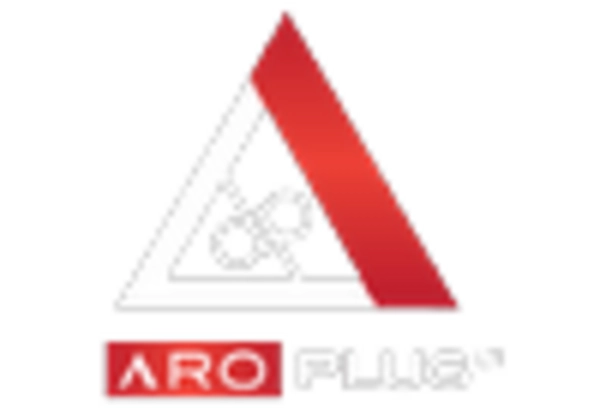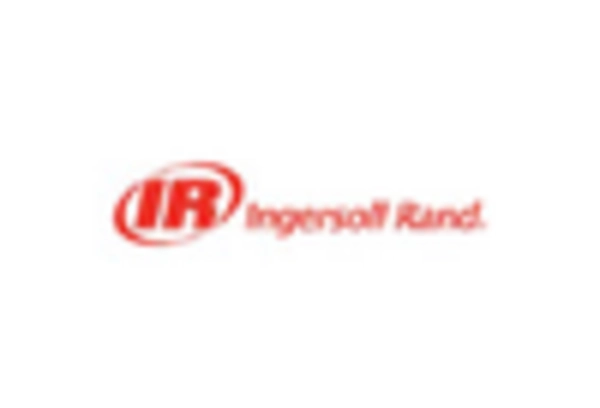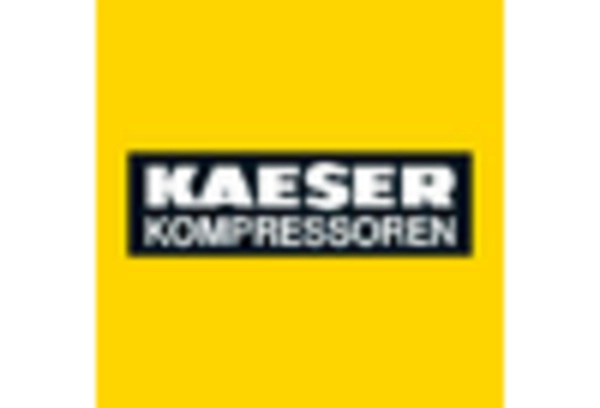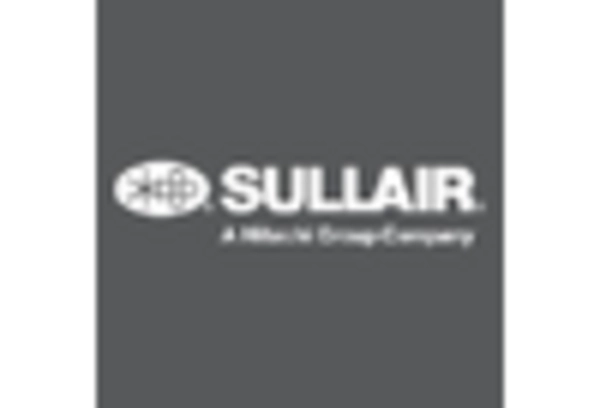Expansion of Construction Activities
The construction industry is a significant contributor to the industrial air-compressor market, with ongoing projects requiring reliable compressed air solutions. In 2025, the construction sector is expected to drive approximately 30% of the market demand in the US. The resurgence of infrastructure development and commercial construction projects necessitates the use of air compressors for various applications, including powering tools and equipment. As construction activities expand, the need for portable and stationary air compressors is likely to increase. This trend suggests that the industrial air-compressor market will benefit from the growth of the construction sector, as companies seek efficient solutions to meet their operational needs.
Rising Demand from Manufacturing Sector
The manufacturing sector plays a pivotal role in driving the industrial air-compressor market. As production activities ramp up, the need for reliable and efficient air compressors becomes paramount. In 2025, the manufacturing industry is projected to account for approximately 40% of the total demand for air compressors in the US. This demand is fueled by the increasing adoption of automation and the need for compressed air in various applications, such as pneumatic tools and assembly lines. Consequently, manufacturers are investing in high-performance compressors to enhance productivity and reduce downtime. The growth of the manufacturing sector is thus a significant driver for the industrial air-compressor market.
Focus on Sustainability and Energy Efficiency
Sustainability has emerged as a critical focus for industries, influencing the industrial air-compressor market. Companies are increasingly prioritizing energy-efficient solutions to reduce their carbon footprint and comply with environmental regulations. The market is witnessing a shift towards compressors that utilize less energy and produce lower emissions. In fact, energy-efficient models can reduce energy consumption by up to 25%, making them attractive to businesses aiming to lower operational costs. This emphasis on sustainability not only aligns with corporate social responsibility goals but also meets the growing consumer demand for environmentally friendly practices. As a result, the industrial air-compressor market is likely to see a rise in the adoption of sustainable technologies.
Increased Investment in Industrial Automation
The trend towards industrial automation is significantly impacting the industrial air-compressor market. As companies invest in automated systems to enhance productivity, the demand for reliable air compressors to support these systems is on the rise. Automation technologies, such as robotics and automated assembly lines, require consistent and high-quality compressed air to function effectively. In 2025, it is anticipated that the automation sector will account for a notable share of the air-compressor market, driven by the need for efficiency and precision in manufacturing processes. This increased investment in automation indicates a robust growth trajectory for the industrial air-compressor market, as businesses seek to optimize their operations.
Technological Advancements in Air Compression
The industrial air-compressor market is experiencing a surge in technological advancements that enhance performance and efficiency. Innovations such as variable speed drives and advanced control systems are becoming increasingly prevalent. These technologies allow for better energy management, reducing operational costs by up to 30%. Furthermore, the integration of IoT devices enables real-time monitoring and predictive maintenance, which can significantly extend the lifespan of compressors. As industries seek to optimize their operations, the demand for technologically advanced air compressors is likely to grow. This trend indicates a shift towards more sophisticated solutions in the industrial air-compressor market, catering to the needs of various sectors, including manufacturing and construction.

















Leave a Comment